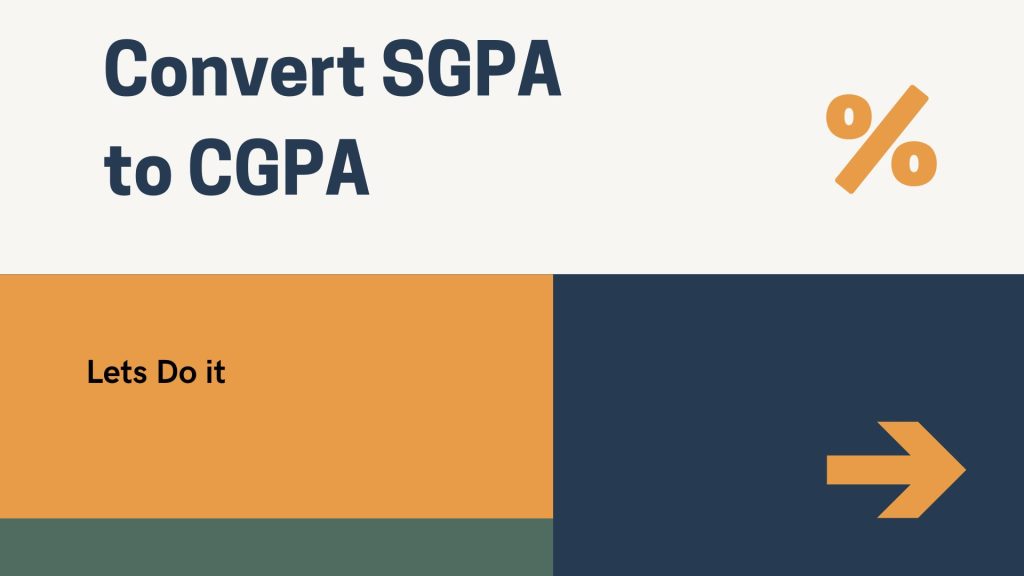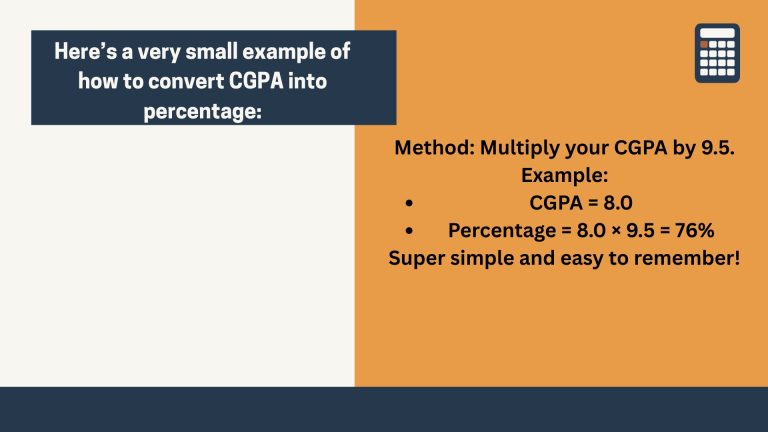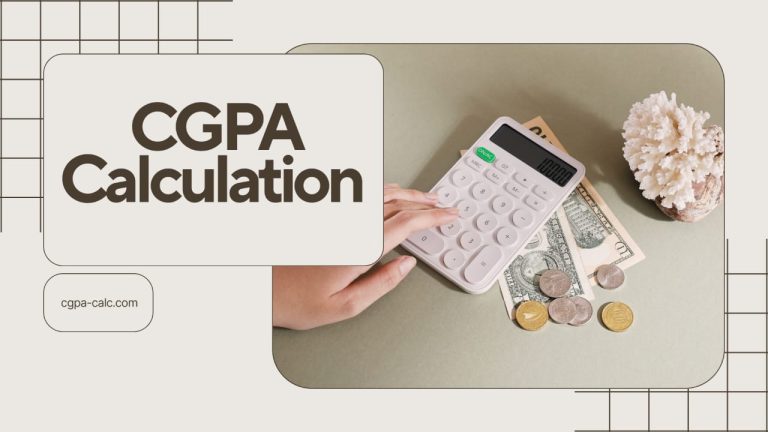How to Convert SGPA to CGPA: Complete Student Guide
Academic performance tracking in Indian universities relies heavily on understanding the relationship between Semester Grade Point Average (SGPA) and Cumulative Grade Point Average (CGPA). Students often struggle with converting semester-wise performance into overall academic standing, particularly when planning their educational trajectory or applying for opportunities requiring cumulative performance metrics.
The conversion process involves mathematical principles that account for credit weightage, semester variations, and cumulative academic progress. Understanding these calculations helps students monitor their academic journey effectively while making informed decisions about course selection and performance improvement strategies.
Different universities across India implement varying methodologies for grade point calculations, making it essential for students to understand both general principles and institution-specific requirements. Mastering these conversion techniques enables accurate academic planning and proper representation of scholastic achievements throughout your educational career.

Understanding SGPA and CGPA Fundamentals
SGPA represents your academic performance during a specific semester, calculated by considering grades earned in individual courses weighted by their respective credit hours. This semester-focused metric provides immediate feedback on recent academic progress and helps identify areas requiring attention before they impact long-term performance.
SGPA Calculation Basics
The fundamental SGPA formula involves multiplying grade points earned in each subject by corresponding credit hours, summing these products, and dividing by total semester credits. For instance, if you earn grade points of 9, 8, 7, and 6 in subjects carrying 4, 3, 4, and 2 credits respectively, your SGPA calculation becomes: [(9×4) + (8×3) + (7×4) + (6×2)] ÷ (4+3+4+2) = 107 ÷ 13 = 8.23.
CGPA Overview and Significance
CGPA extends beyond single-semester performance, representing cumulative academic achievement across all completed semesters. This comprehensive metric considers your entire academic journey, providing employers, graduate schools, and scholarship committees with holistic performance assessments.
The significance of CGPA grows throughout your academic program, as it influences eligibility for advanced courses, research opportunities, internships, and career prospects. Understanding how individual semester performances contribute to this cumulative measure helps students develop effective long-term academic strategies.
Mathematical Foundation for Conversion
Converting SGPA values to CGPA requires applying weighted average principles that account for varying credit distributions across different semesters and academic periods. This mathematical approach ensures fair representation of academic effort and achievement while preventing manipulation of performance metrics.
Weighted Average Methodology
The core conversion formula follows: CGPA = Σ(SGPA × Credits) ÷ Σ(Credits), where summation includes all completed semesters. Each semester’s contribution depends on both performance quality (SGPA) and academic load (total credits), ensuring that demanding semesters receive appropriate recognition in cumulative calculations.
Consider a practical example where a student completes three semesters:
- Semester 1: SGPA 7.8, Credits 20, Grade Points = 7.8 × 20 = 156
- Semester 2: SGPA 8.4, Credits 22, Grade Points = 8.4 × 22 = 184.8
- Semester 3: SGPA 7.6, Credits 21, Grade Points = 7.6 × 21 = 159.6
Total Grade Points = 156 + 184.8 + 159.6 = 500.4 Total Credits = 20 + 22 + 21 = 63 CGPA = 500.4 ÷ 63 = 7.94
Credit Weightage Impact
Credit weightage significantly influences CGPA calculations because semesters with higher credit loads carry proportionally greater impact on cumulative performance. A semester containing 24 credits affects your CGPA more than one with 18 credits, reflecting increased academic workload and learning experiences.
This weighting system prevents students from manipulating their CGPA by taking minimal credits during challenging academic periods while ensuring that substantial coursework receives appropriate recognition in overall performance assessments.
Step-by-Step Conversion Process
Converting SGPA to CGPA requires systematic approach ensuring accuracy and compliance with institutional standards. Following established procedures prevents calculation errors that could misrepresent your academic achievements.
Gathering Required Information
Begin by collecting official transcripts or grade reports containing SGPA values and corresponding credit hours for each completed semester. Verify this information against university records to ensure accuracy, as calculation errors often stem from incorrect input data rather than mathematical mistakes.
Document any special circumstances such as repeated courses, transferred credits, or courses taken during summer sessions, as these may require different handling in conversion calculations depending on your institution’s policies.
Applying Calculation Formula
Once you have accurate data, apply the weighted average formula systematically. Calculate total grade points for each semester by multiplying SGPA by total credits, sum these products across all semesters, then divide by cumulative credit hours.
Maintain precision throughout intermediate calculations, avoiding premature rounding that could accumulate errors. Most institutions require final results rounded to two decimal places, but intermediate steps should retain additional precision for accuracy.
Verification Methods
Cross-check your calculations using alternative approaches when possible. Many students find it helpful to calculate semester-by-semester cumulative CGPA progression, verifying that each step produces logical results that align with expected performance trends.
University-Specific Conversion Guidelines
Different educational institutions maintain unique approaches to SGPA-CGPA conversion, reflecting their academic philosophies and administrative requirements. Understanding these institutional variations ensures accurate calculations that comply with official standards.
Engineering College Practices
Technical universities like VTU, SPPU, and GTU often provide detailed conversion guidelines through official websites and student handbooks. These institutions typically account for laboratory work, project components, and practical assessments with specific credit allocations that influence conversion calculations.
Engineering programs frequently include variable credit distributions across semesters, with early semesters focusing on foundational courses and later periods emphasizing specialization and project work. Understanding these patterns helps students anticipate how different academic phases will impact their overall CGPA.
Management and Professional Programs
Business schools and professional institutions may implement modified conversion approaches that account for case studies, group projects, internships, and practical training components. These elements often receive different credit weightings than traditional coursework, requiring careful consideration during conversion processes.
Professional programs frequently integrate industry experience and practical training into academic credit systems, necessitating specialized conversion approaches that properly value diverse learning experiences within overall performance calculations.
Advanced Calculation Scenarios
Complex academic situations require sophisticated conversion approaches that account for various exceptional circumstances students may encounter during their educational journey.
Repeated Course Handling
When students repeat courses to improve grades, institutions typically follow specific policies for incorporating these attempts into CGPA calculations. Some universities replace original grades entirely, while others average multiple attempts or use the highest achieved grade.
Understanding your institution’s repeat course policy ensures accurate conversion calculations that properly reflect your academic standing. Consult academic advisors or examination departments for clarification on specific policy applications.
Transfer Credit Integration
Students transferring between institutions or programs may need to integrate credits from multiple sources into their CGPA calculations. Transfer credits often require conversion between different grading scales or receive different treatment in cumulative calculations.
Verify how your current institution handles transfer credits before including them in CGPA calculations. Some universities exclude transfer credits from GPA calculations while counting them toward degree completion requirements.
Digital Tools and Calculation Resources
Modern technology provides numerous resources for accurate SGPA-CGPA conversion, ranging from simple calculators to comprehensive academic management platforms that help students track their progress throughout their educational journey.
Official University Calculators
Most major Indian universities now provide online conversion tools through student portals or official websites. These calculators incorporate institution-specific policies and grading scales, ensuring compliance with official conversion standards and eliminating guesswork about appropriate methodologies.
University-provided tools often include additional features such as degree audit capabilities, graduation requirement tracking, and academic planning resources that help students understand how their current performance impacts long-term educational goals.
Mobile Applications and Platforms
Educational mobile apps offer convenient access to conversion calculations and academic record management. These platforms typically provide grade tracking, performance trend analysis, and goal-setting features that complement basic conversion functionality.
While mobile apps offer convenience, always verify important calculations using official institutional resources, particularly for applications requiring documented academic performance verification.
Spreadsheet Templates and Custom Solutions
Students with complex academic situations often benefit from creating personalized calculation spreadsheets that can handle various scenarios such as repeated courses, transfer credits, and variable semester structures. These custom solutions provide flexibility for unique circumstances while maintaining calculation accuracy.
Templates can be designed to automatically update CGPA calculations as new semester data becomes available, providing ongoing monitoring of academic progress and enabling proactive planning for performance improvement or maintenance.
Strategic Academic Planning Applications
Understanding SGPA-CGPA conversion enables strategic academic planning that helps students optimize their educational outcomes and achieve specific performance targets throughout their degree programs.
Performance Goal Setting
Students can use conversion calculations to establish realistic CGPA targets and determine the SGPA levels required in remaining semesters to achieve these goals. This mathematical approach to goal setting provides clear, measurable objectives that guide study strategies and course selection decisions.
For example, a student with current CGPA of 7.5 who wants to achieve 8.0 by graduation can calculate the required SGPA for remaining semesters and develop specific strategies to reach this performance level.
Risk Assessment and Mitigation
Conversion calculations help identify potential academic risks early, enabling proactive intervention before performance issues significantly impact cumulative standings. Students can model various performance scenarios to understand how temporary difficulties might affect their overall academic trajectory.
This analytical approach supports informed decision-making about course loads, study strategies, and support resource utilization, helping students maintain satisfactory progress toward their academic and career objectives.
Converting SGPA to CGPA requires understanding both mathematical principles and institutional policies that govern academic performance calculations. Students who master these conversion techniques gain valuable insights into their academic progress while developing skills for strategic educational planning. Whether tracking current performance or projecting future outcomes, accurate conversion calculations provide the foundation for informed academic decision-making throughout your university experience. Regular monitoring of these metrics enables timely adjustments to study strategies and course selections, ultimately supporting successful completion of educational objectives.
For more info, visit the main Indian education authority: UGC (University Grants Commission) .


